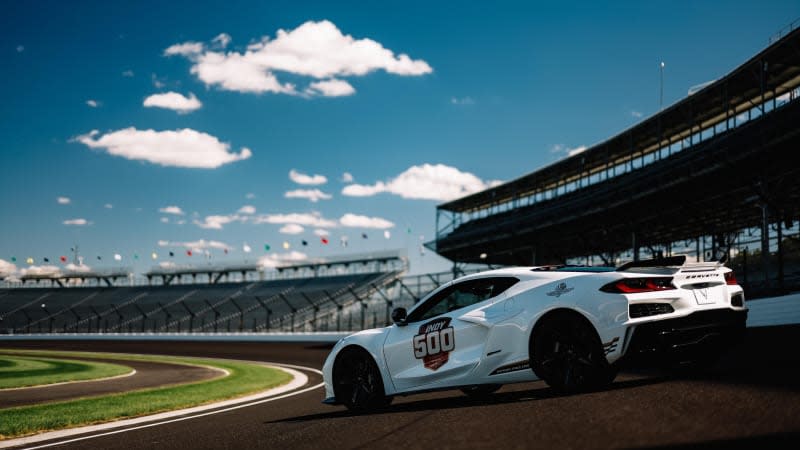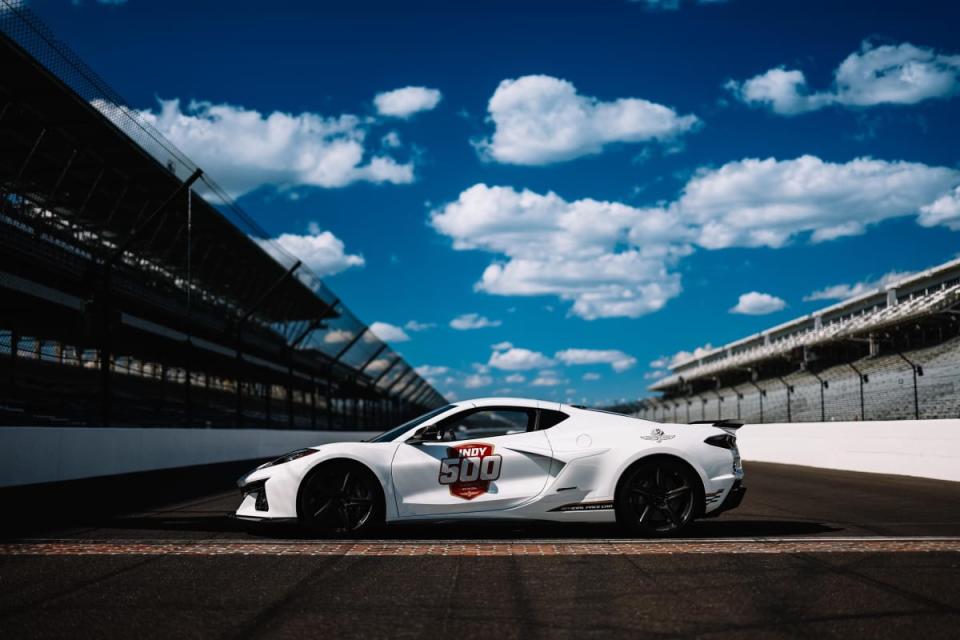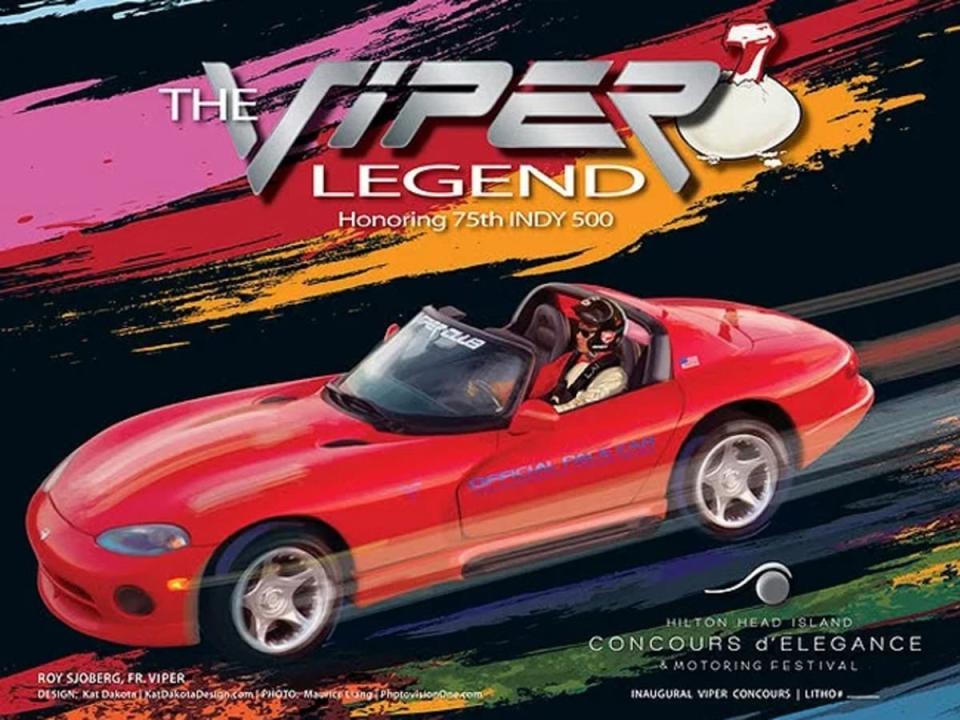Indy 500 pace cars: Wouldn't you really rather have a Viper?

This year's Indy 500 pace car, the Chevrolet Corvette E-Ray. (Penske Entertainment: Joe Skibinski)
Before Rick Mears won his fourth Indianapolis 500 in 1991, he already had his eye one sweet prize.
Mears had become smitten during the month with the Dodge Viper that would pace the race, knowing that besides money and glory for an Indy victory, the winning driver traditionally wins a pace car. To Mears, the Viper would be a trophy as much as a cool car.
The pace cars from Mears’ first three Indy victories didn’t exactly move his needle – 1979 Fox body Ford Mustang, 1984 mid-engine Pontiac Fiero and 1988 Oldsmobile Cutlass Supreme. The Viper, conceived as a modern-day Cobra with a snarling V-10, was a true hot rod.
“I win the race and I’m thinking I’m going to get a Viper,” Mears said.
Instead, he got a Dodge Stealth. Same color as the Viper but clearly not the same, and it began a quest by Mears to obtain a car that became Indy 500 pace car lore.

(Penske Entertainment: Joe Skibinski)
Pace cars are keepsakes for various reasons, whether they’re owned by Indy 500-winning drivers, replicas desired by collectors, or vehicles so rare that they can only be seen in museums. Each has a story, some glorious and some not.
A Stoddard-Dayton roadster in 1911 not only paced the first Indy 500, it was the first pace car in auto racing history. A Dodge Challenger crashed on pit road just after leading the start of the 1971 race, a 2001 Olds Bravada was the first (and only) SUV, and a Chevy SSR two years later was the only pickup truck. This year’s pace car, a Corvette E-Ray 3LZ, is the first hybrid. Mustang, Camaro and Corvette pace cars are among the most popular for collectors.
“You look at the roster of pace cars, and there’s some really heavy-hitting cars that have paced this race,” said Jason Vansickle, vice president of curation and education at the Indianapolis Motor Speedway Museum.
About that Viper
The Viper was cutting-edge when it came to the speedway in 1991, although it wasn’t supposed to be the pace car. That honor went to the Stealth, which Dodge promoted heavily as its performance model while the Viper was still in its early days as a prototype that wouldn’t be available to the public until 1992.
The Stealth, though, was a re-badged version of the Japanese Mitsubishi 3000GT, and that caused an outcry from many, particularly the United Auto Workers, after it was announced as the 1991 pace car.
“They claimed it wasn’t American and there should be an American car to pace this American race,” Vansickle said. “At the last minute, they pulled the car and put into commission the Dodge Viper.”

It was one of the first pre-production Vipers built, and Dodge rushed it to the speedway even though it contained inconsistent panel gaps and other flaws typical of prototypes if you took a close look.
“Seeing this car 33 years later, you can tell it was made in haste to get it ready,” Vansickle said. “Once you hear the story and the fact that it’s one of the first, if not the first, pre-production Vipers made, it’s a really neat car even with its issues. The thing is fast as all get-out.”
Mears wanted it so badly after he won the 500, he contacted officials with Dodge hoping he could swap the Stealth for a Viper. All he got was a hard “No!”
“I felt like they owed it to me,” Mears said. “Finally, I thought I would buy one. They told me there’s a dealer close to my home that has one, so I called and asked how much. The guy said, ‘Ten over. That’s what we’re charging everyone.’ I said thanks but no thanks. It wasn’t the 10 over that was the problem, it was the idea that I didn’t like.”
Congratulations, here's your Avanti
So Mears moved on, minus a car he really wanted. He wasn’t the first Indy 500 winner to get a different car.
A Studebaker Lark Daytona convertible paced the 1962 race but Rodger Ward was presented a Studebaker Avanti.
“It was one of the first Avantis built, and I don’t think they were able to get it ready in time to pace the race,” Vansickle said. “But they still had one there to present to the winner.”
The 1969 Chevrolet Camaro pace car replica remains one of the most popular, and most collected, in history.

 Yahoo Autos
Yahoo Autos 